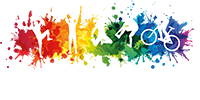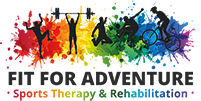FAQs
Sports Therapy is an aspect of healthcare that is specifically concerned with the prevention of injury and the rehabilitation of the patient back to optimum levels of functional, occupational and sports specific fitness, regardless of age and ability.
It utilises the principles of sport and exercise science incorporating physiological and pathological processes to prepare the participant for training, competition and where applicable, work.
NO! – Clinical Sports Therapy is not Sports Massage, nor is it Sports Massage Therapy, although massage plays a vital role in Clinical Sports Therapy.
According to The Society of Sports Therapists , it is: “an aspect of healthcare that is specifically concerned with the prevention of injury and the rehabilitation of the patient back to optimum levels of functional, occupational and sports specific fitness, regardless of age and ability.”
For most of us that definition may not make it any clearer and you may still be a little confused, as Clinical Sports Therapists we understand that. Here is my, hopefully simpler and easy to understand, explanation.
Understanding Sports Massage
The easiest way for me to explain why Sports Therapy is NOT the same as Sports Massage, or Sports Massage Therapy, is to first explain what Sports Massage actually is! So, Sports Massage is a deep tissue massage using manual therapy skills relating to the soft tissues of the body – including muscles, fascia, ligaments and tendons – and encompasses scientific knowledge to help in the prevention of injury and performance improvement.
The big question…..What is the Difference?
Clinical Sports Therapy builds on all the practices of Sports Massage by utilising a greater amount of functional anatomy, physiology and pathology to prepare and/or treat a person for training, competition, or work. We undertake postural assessments as well as joint assessments. As a Sports Therapist, I use advanced soft tissue and manual therapy techniques – such as soft tissue mobilisation and release – orthopaedic assessments, biomechanics, thermal therapy and taping ( to name but a few, the list is long ) to optimise your performance, preparation and prevention of injury.
We’re trained to provide immediate care of injuries as well as assess, treat and rehabilitate them by implementing rehab programmes consisting of manual therapy along with strength and conditioning work. In short, I aim to incorporate exercise-based rehab (when needed) with hands-on treatment like joint mobilisations, myofascial release and sports massage depending on your needs .
So this is the next question I here you all asking and puzzling over. Sports Therapists and Physiotherapists can certainly work hand-in-hand, but while Sports Therapists typically use a more hands-on approach towards the prevention and rehab of injuries, Physiotherapy is more medically focussed and tends to use exercise-based rehab.
A Sports Therapist, who is a Member of The Society of Sports Therapists, is an allied health professional who has the knowledge, skills and ability to:
- utilise sports and exercise principles to optimise performance, preparation and injury prevention programmes
- provide the immediate care of injuries and basic life support in a recreational, training, occupational & competitive environment
- assess, treat, rehabilitate and, where and if appropriate, refer on for specialist advice and intervention.
- provide appropriate soft tissue interventions in a sport & exercise context
- plan and implement appropriate rehabilitation and return to training/work programmes
Massage is the manipulating of superficial and deep muscle and connective tissue using various techniques to help enhance function, relieve muscle tension, reduce postural defect and aid in the healing process. Sports massage has many benefits. In addition to feeling good, sports massage reduces the heart rate and blood pressure, increases blood circulation and lymph flow, reduces muscle tension, improves flexibility and relieves pain. Sports Massage can also include pre-event, post-event and maintenance techniques that maximise function and decrease the chances of injury.
I am in Swinton, just outside the market town of Malton in North Yorkshire. I carry out appointments at Swinton Grange Business Park, Swinton Lane, YO17 6QR.
Directions
Use the B1257 towards Hovingham, when you get to Swinton turn left (before you get to the pub). Follow Swinton Lane and you will see the signs for North Yorkshire Whole Health, on the right. Drive through the gates and follow the road around to the left, you will see a sign for Mary Bucher. There is parking at this side of the building and also on the gravel behind the Mary Bucher sign. Enter the building through the front door and use the stairs, to the left, or the lift up to the first floor – there is a small waiting area and seats in this area, I will meet you here.
Wearing appropriate clothing will allow me to effectively assess the affected area i.e. wearing a vest for upper limb assessment and shorts for a lower limb assessment.
Once you have completed your treatment(s), it is advisable to drink plenty of water and to follow any advice I give you.

